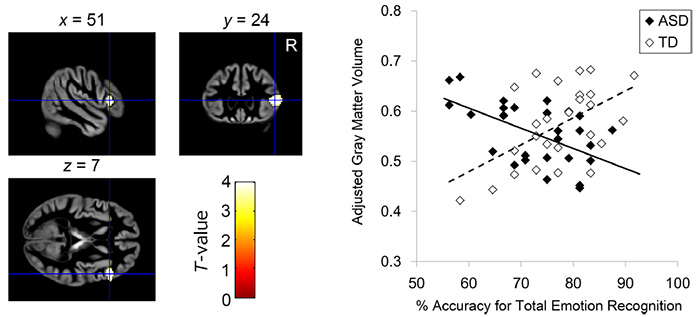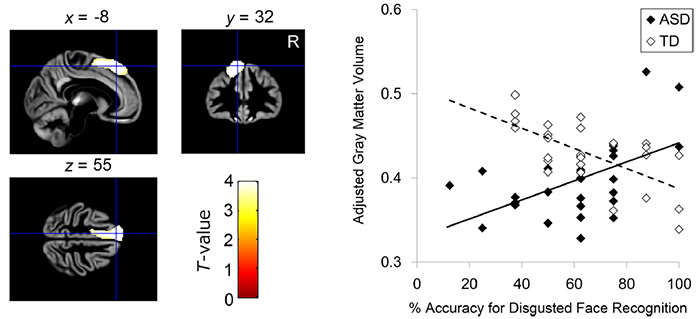SATO Wataru Laboratory
The structural neural correlates of atypical facial expression recognition in autism spectrum disorder
(Uono, Sato, Kochiyama, Yoshimura, Sawada, Kubota, Sakihama, & Toichi: Brain Imaging Behav)
Previous studies have demonstrated that individuals with autism spectrum disorder (ASD) are worse at recognizing facial expressions than are typically developing (TD) individuals.
The present study investigated the differences in structural neural correlates of emotion recognition between individuals with and without ASD using voxel-based morphometry (VBM).
We acquired structural MRI data from 27 high-functioning adults with ASD and 27 age- and sex-matched TD individuals.
The ability to recognize facial expressions was measured using a label-matching paradigm featuring six basic emotions (anger, disgust, fear, happiness, sadness, and surprise).
The behavioural task did not find deficits of emotion recognition in ASD after controlling for intellectual ability.
However, the VBM analysis for the region of interest showed a positive correlation between the averaged percent accuracy across six basic emotions and the grey matter volume of the right inferior frontal gyrus in TD individuals, but not in individuals with ASD.
The VBM for the whole brain region under each emotion condition revealed a positive correlation between the percent accuracy for disgusted faces and the grey matter volume of the left dorsomedial prefrontal cortex in individuals with ASD, but not in TD individuals.


The different pattern of correlations suggests that individuals with and without ASD use different processing mechanisms for recognizing othersf facial expressions.
Return to
Recent Research.
Return to
Main Menu.

